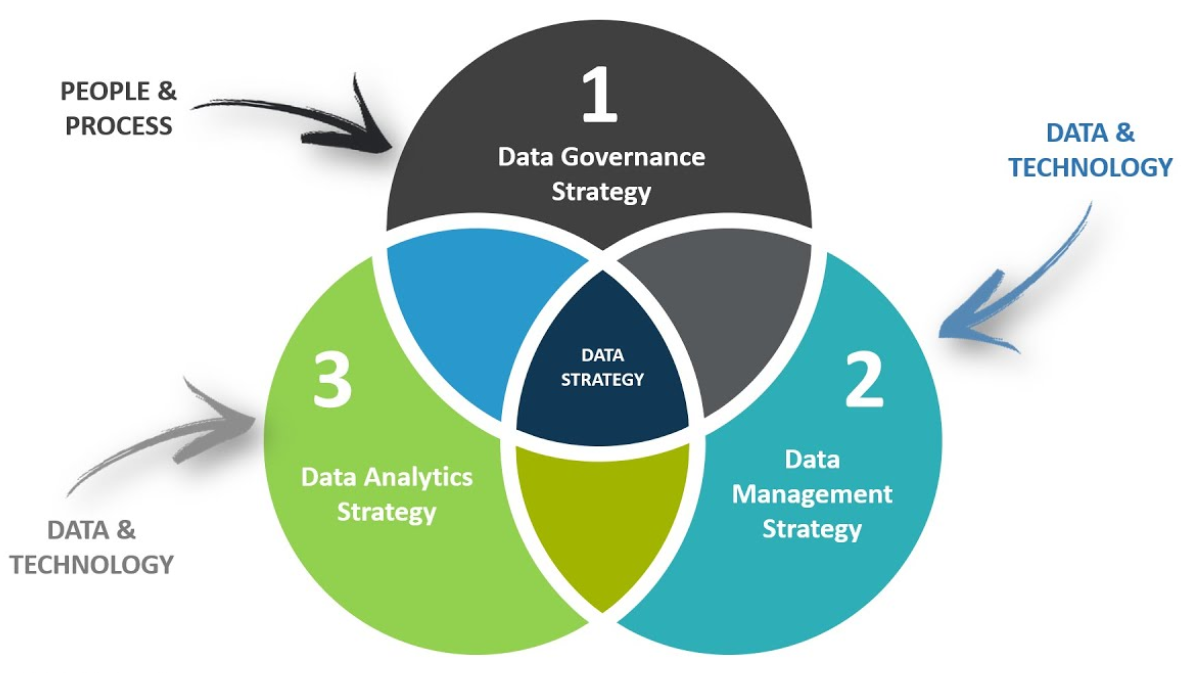
Data is no longer a competitive advantage—it’s a necessity. In 2025, the companies winning their markets aren’t just the ones with the most data, but the ones who know what to do with it.
Whether you’re running a startup, a retail chain, or a logistics firm, having a clear data strategy can mean the difference between growth and stagnation.
What Is a Data Strategy?
A data strategy is a plan that defines how an organization collects, manages, analyzes, and uses data to make better decisions and drive value.
It includes:
- Data collection: What are we tracking? Where does it come from?
- Data storage: How is it stored, structured, and accessed?
- Data governance: Who owns it? How is it protected and kept compliant?
- Data activation: How is it used to drive revenue, innovation, or operations?
It’s not about big data—it’s about smart data.
Why Data Strategy Is Now Non-Negotiable
1. Decision-making is now data-driven—or it’s wrong
In the past, leaders relied on instinct and experience. In 2025, they rely on dashboards, analytics, and predictive models. Without a strategy, you risk acting on incomplete or misleading information.
2. AI can’t work without clean, structured data
Companies rushing to deploy AI tools quickly realize this: bad data = bad results. AI models are only as good as the inputs. A solid data foundation is the first step to any real AI transformation.
3. Privacy regulations are tighter than ever
From GDPR to CCPA to India’s new DPDP law, data privacy is a global issue. If you don’t have governance built into your strategy, your company is one leak or complaint away from legal trouble.
Core Components of a Winning Data Strategy
Data architecture
This is your data’s blueprint. Where is it stored? In warehouses (like Snowflake or BigQuery)? Lakes (like S3)? What tools are used to access and analyze it?
Modern stacks often include:
- Collection: Segment, Fivetran
- Storage: Snowflake, Databricks
- Transformation: dbt
- BI: Looker, Power BI
- Orchestration: Airflow, Dagster
A good architecture balances cost, scalability, and performance.
Data quality
No strategy survives if the data is unreliable. Cleaning, deduplication, validation, and monitoring are crucial. Tools like Monte Carlo or Soda help automate this process.
The goal: trustworthy, real-time, business-ready data.
Data ownership and access
Define roles clearly:
- Who owns what datasets?
- Who has permission to read/write/transform data?
- Is there versioning and lineage tracking?
This avoids bottlenecks and shadow systems.
Activation
This is where the magic happens: using data to drive actions. It could mean:
- Personalizing marketing
- Automating inventory
- Predicting churn
- Optimizing pricing
- Feeding AI models
Without activation, data is just storage cost.
Mistakes to Avoid
Hoarding data without purpose
More isn’t always better. Collecting everything “just in case” leads to bloat, confusion, and risk. Know why you collect each dataset.
Siloed data teams
If your analysts, engineers, and business units don’t talk, your strategy will fail. Break silos with shared tools, goals, and data literacy programs.
Ignoring metadata and documentation
Without clear documentation, new team members waste time trying to understand what data means. Good strategies include robust data catalogs.
How to Build a Data Strategy From Scratch
Step 1: Align with business goals
Start with problems, not tools. What decisions are being made too slowly or too poorly? Where is data missing from the equation?
Step 2: Map your data flows
Understand where data comes from, how it moves, and where it lands. Tools like dbt or lineage maps in BI platforms help visualize this.
Step 3: Define roles and responsibilities
Make sure there’s a data steward (or team) responsible for governance, documentation, and quality checks.
Step 4: Choose the right tools
Don’t chase hype. Start small, with tools that match your needs and skills. Open-source and cloud-native options often offer flexibility.
Step 5: Monitor and evolve
Data strategy isn’t static. Review it quarterly. Check for tool performance, bottlenecks, and whether it’s still aligned with company strategy.
Data Strategy in Startups vs Enterprises
Startups
- Lean, fast-moving
- Use modular tools (ex: dbt, Metabase)
- Focus on action over perfection
- Less bureaucracy, but higher risk of disorganization
Enterprises
- Complex systems and legacy data
- Requires strong governance
- Benefits from central data teams
- More focus on compliance and scalability
Both need strategy—just adapted to scale and stage.
Case Study: Retail Chain Adopts Data Strategy
A national clothing brand had fragmented POS systems across 200 stores. No unified view of inventory, sales, or customer behavior.
They implemented:
- A centralized data warehouse
- Unified product and customer data
- Predictive analytics for demand forecasting
- Dashboards for store managers
Results after 6 months:
- 18% reduction in stockouts
- 22% increase in promotion ROI
- 40% faster executive decision-making
The key? Strategy before tools.
The Future of Data Strategy
- AI-first architecture: Data strategies will include pipelines designed specifically to feed LLMs and custom AI models
- Real-time pipelines: Batch is fading. Real-time decisioning will be standard, especially in ecommerce and fintech
- Composable data stacks: Companies will mix and match tools like Lego bricks, with flexibility at every layer
- Data as product: Teams will treat internal data like software—versioned, documented, and user-tested






